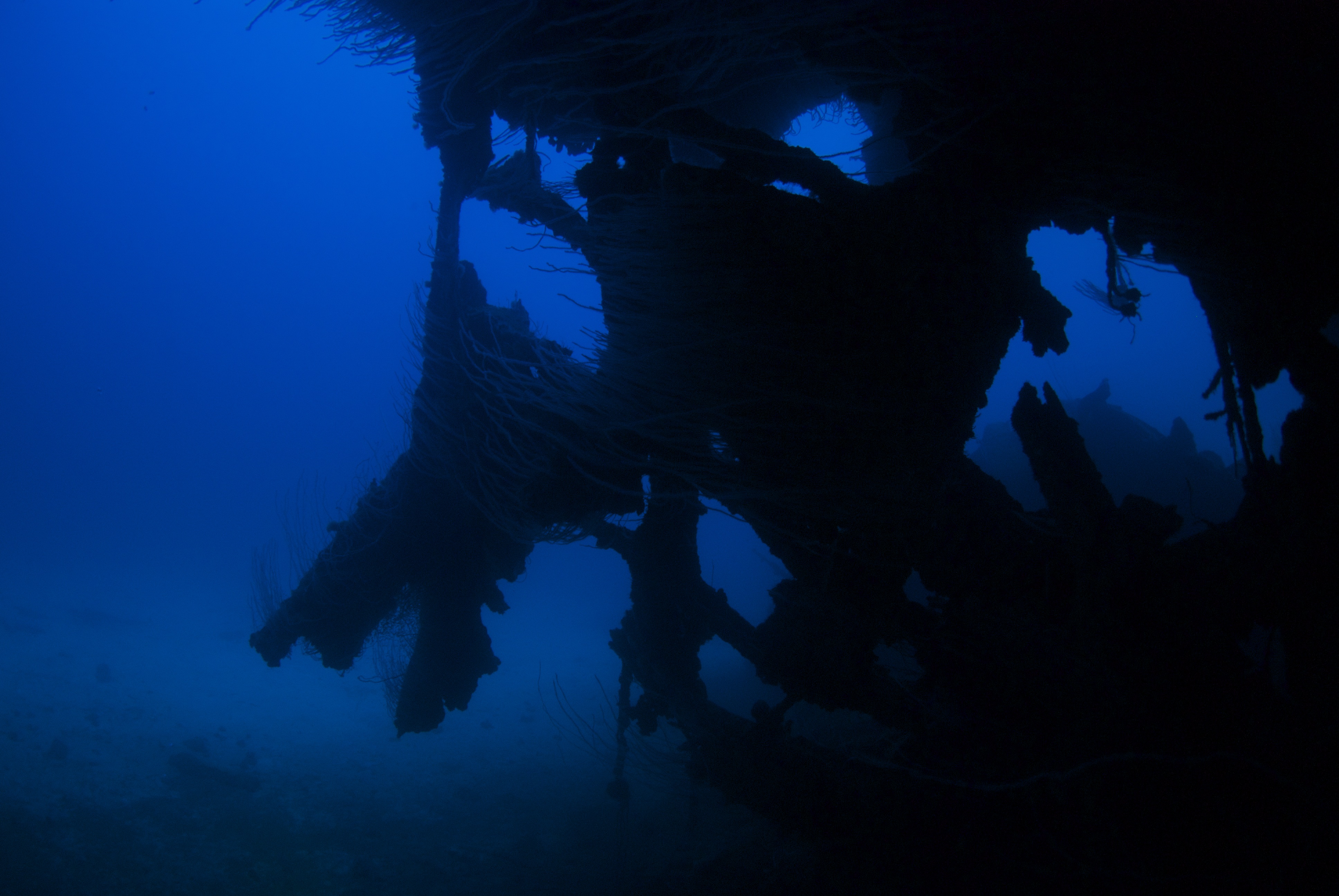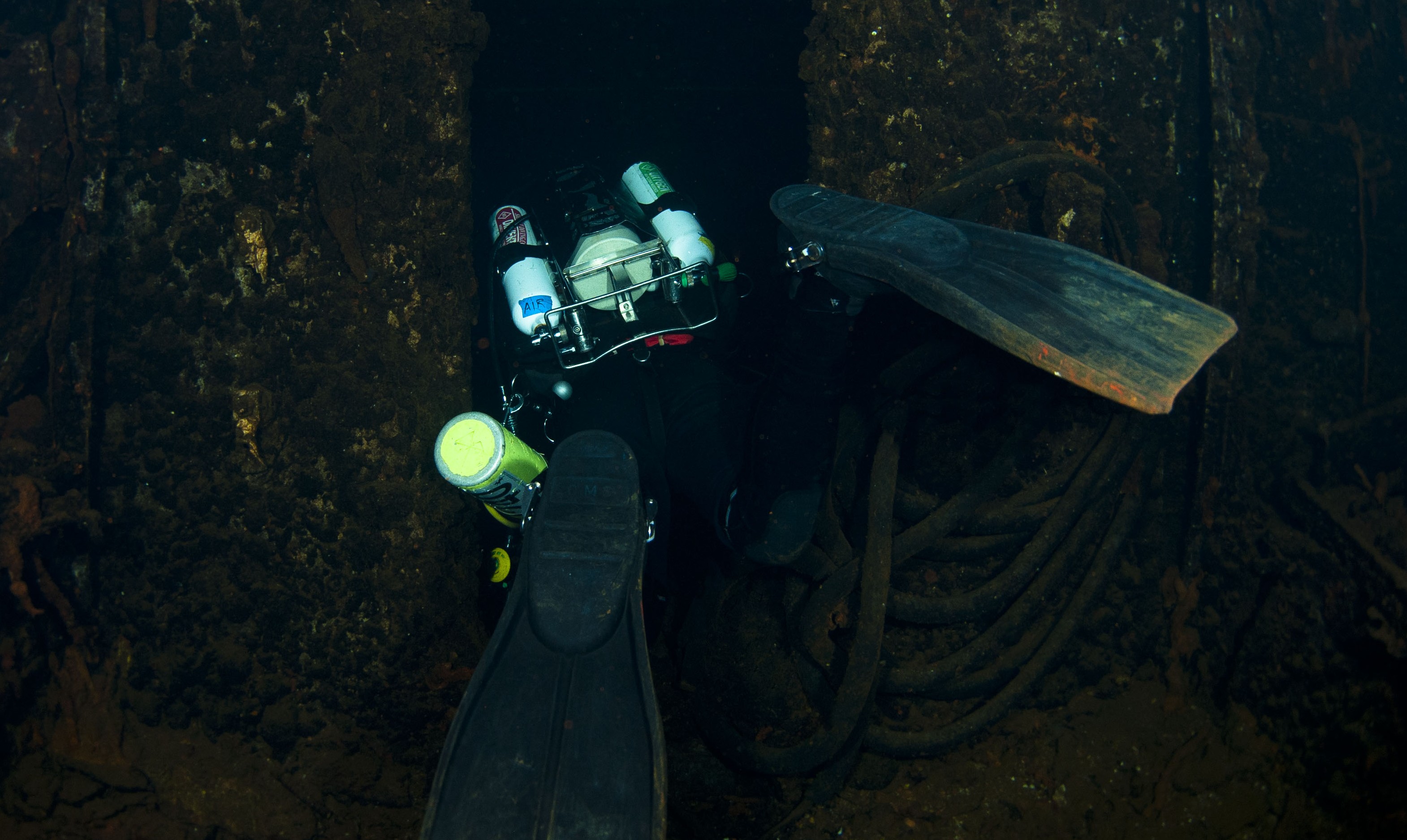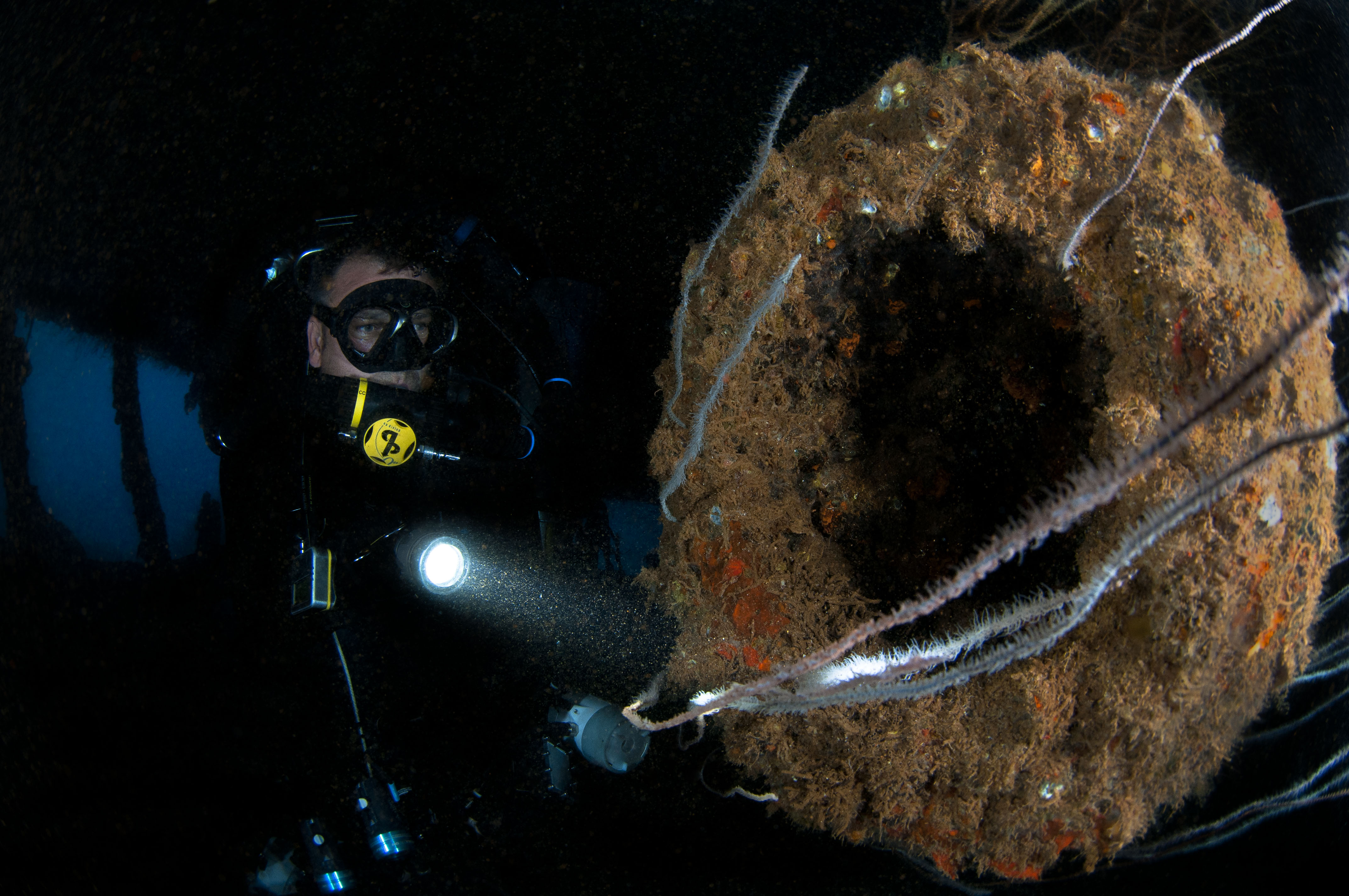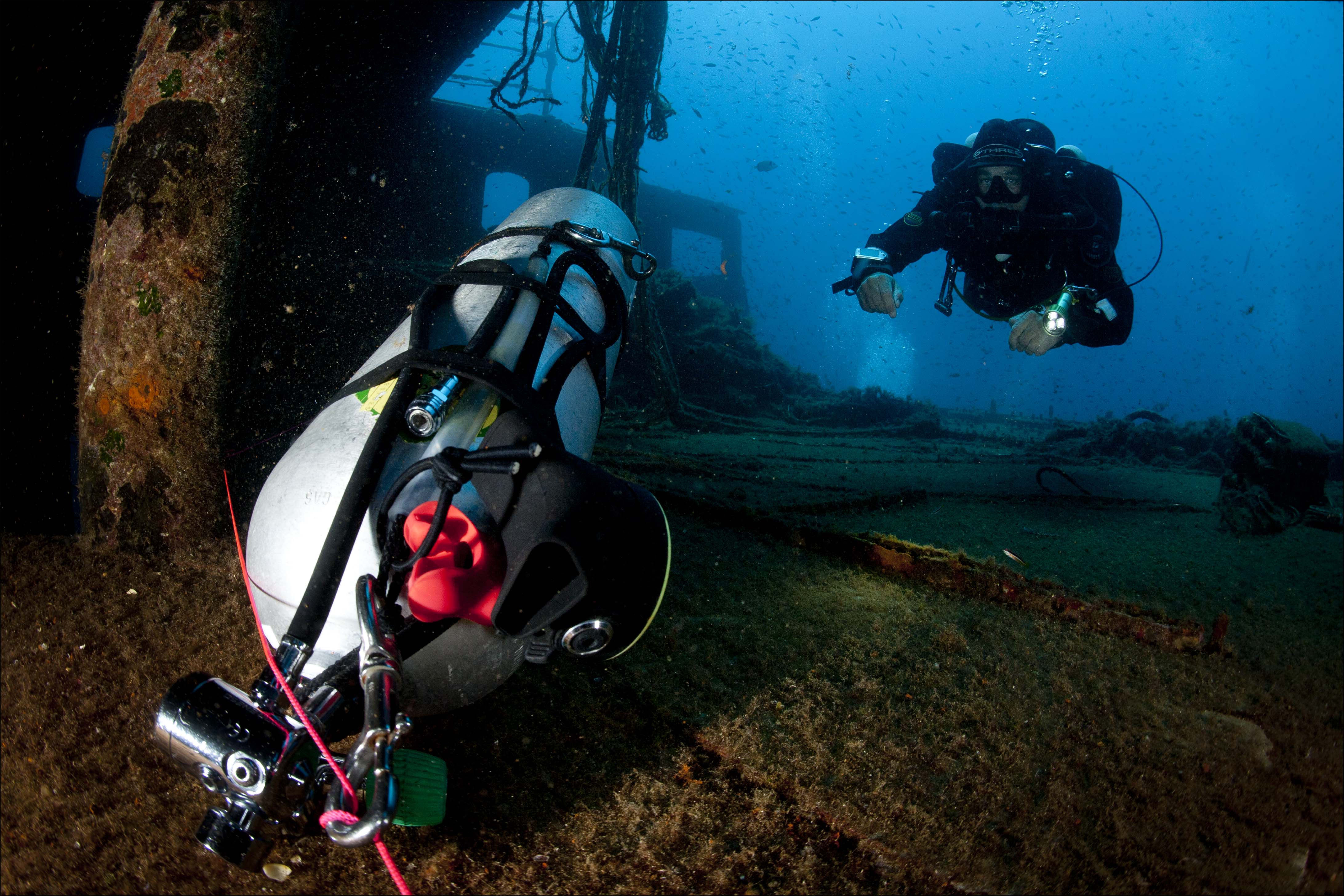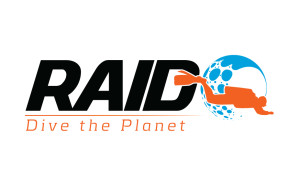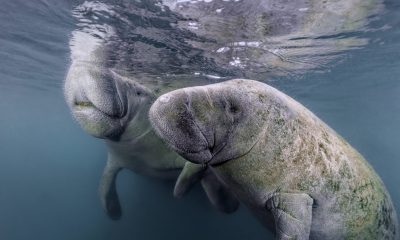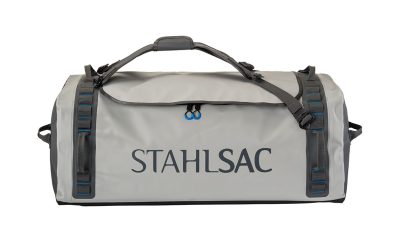News
Paul Toomer: Wreck Head
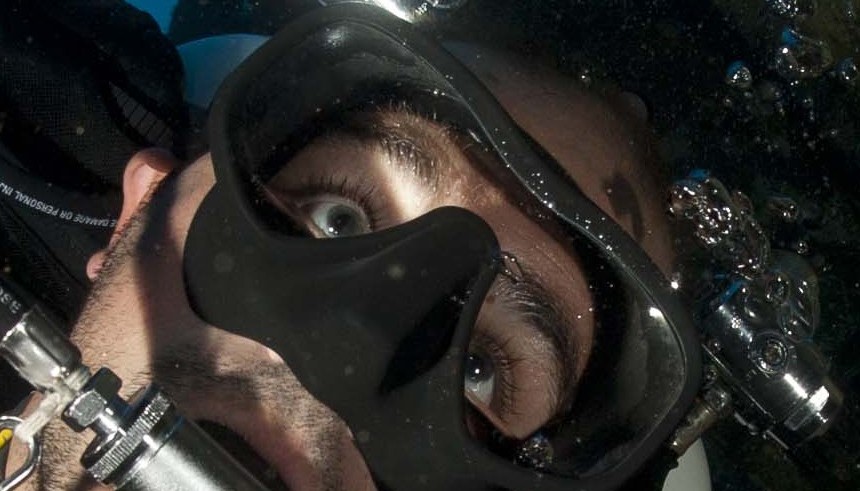
Part 5 – Lost Buddy
In this article, we will be looking at what has to be one of the creepiest skills on an advanced wreck course, and that’s a lost team mate! Can you imagine what it must feel like to turn around and one of your team is missing? I think it would probably be accompanied by a little accident in the back end of your suit; although I imagine that in a scenario such as this, the lost buddy’s pants will be in a lot worse state.
We will also be looking at staging though, which is a rocking skill as it makes you feel “oh so techie” and is so easy to do!
As with my previous article about losing your line, there should be no reason whatsoever to lose a team mate during a dive. Good use of lines, lights and communications will almost definitely mean that the only time you will use this drill is on your course.
The most common reason for team mates getting lost is loss of visibility. A silt out in a wreck can be pretty frightening; visibility can drop in an instant.
So there you are, enjoying the inside of some thrilling wreck when you realise someone is gone! Missing. LOST! My first piece of advice is take a few sanity breaths yourself and calm your other team mates down too. We all know that our minds will now be full of trepidation and fear.
Next, make sure you are all going to stay safe. The only way divers stay safe is by having enough gas to breath. Don’t now go getting yourself into a situation that removes any possibility of you getting out of the wreck yourself. Take a second to recompute your gas schedule based on thirds.
Now you have an allowable maximum search time based on your gas volume. Please don’t ignore your decompression schedule if there is one and don’t go racking up masses of deco unless you can complete the obligation.
If the diver went missing while reeling the line out on the way into the wreck I suggest you tie the line off immediately. This now gives you a final search position, as the diver must be behind you. If you are on a line that is semi permanent (quite rare for wreckers but common for cavers) then you need to mark your position on the line. I use a personalised marker nicknamed a “cookie”. This too gives you a final search position.
Next, cover all lights; you may actually see the glow from your team mate’s light. If no light is visible, look for signs of movement. Perhaps silt kicked up or percolation falling from the ceilings.
If this still yields no joy then it is time to search. Slowly swim down the line and look for signs of the missing diver. If you find the diver but he/she is off the line down another passageway do NOT rush after them. Keep you and your team safe. Tie yourself to your primary line making a “T”. Also mark the way to the exit with an Arrow marker. I like to tie my “T” into the arrow so my search line does not slide on the primary line.
If you have searched to the limits of your available time and gas it would probably be a good idea to leave the missing diver as many clues on how to get out as possible. Leave the primary line in the wreck. It can also be used by a search and rescue team if needs be. The main reason though is that the diver may find it and make a safe exit using it. Before you leave tie your torch into the line shining its beam onto an arrow marker clearly pointing to the exit.
More often than not, your missing team mate will be waiting outside searching for you, and waiting to see that you are safe. Phew!!!
Now let’s move onto something a little less stressful – Staging! It even sounds techie!
Staging is a very clever technique actually as it allows you to move through the wreck without having to carry masses of cylinders but also NOT putting yourself at much more of an increased risk. The main point is, that trying to get through very tight passageways and doors with stages on is very difficult. So why not leave them for later retrieval.
We use the rule of thirds for staging as well so management of the stage is easy. Use a third of its volume and then stage it. This means when you get back to it, it still has two thirds of its original volume left. It’s the same principle as all penetration gas rules.
Staging though needs to be done carefully. The cylinder needs to be tied to the primary line so that it can be easily relocated. Because you have used this cylinder to penetrate you sure as hell are going to need it to exit the wreck, so make sure it’s secure. Use the neck piston clip to secure it to the line. Double wrap the line through the gate of the piston clip to keep it static, therefore stopping it from drifting away. Finally, before moving on, turn the cylinder off but leave it charged. You do not want to come back to an empty stage!
There is an unwritten rule in wrecks and caves that staged cylinders are left alone. Can you imagine the consequences of not following this rule?
And there you have it; our episode on lining is at an end. Next time round I am going to look at lights. And let me tell you, dive lights are sexy little beasts so make sure you come back to the Wreck Diving section of Scubaverse.com in a couple of weeks from now..
As ever, all opinions expressed are my own. I am in no way trying to replace proper instruction. My opinions may differ from agency to agency and instructor to instructor and I do not wish to disrepute any of them.
Paul is the Director of Training at RAID. To find out more about the courses that RAID offers, visit www.diveraid.com.
Blogs
Heading out on the water this Summer? Watch for manatees
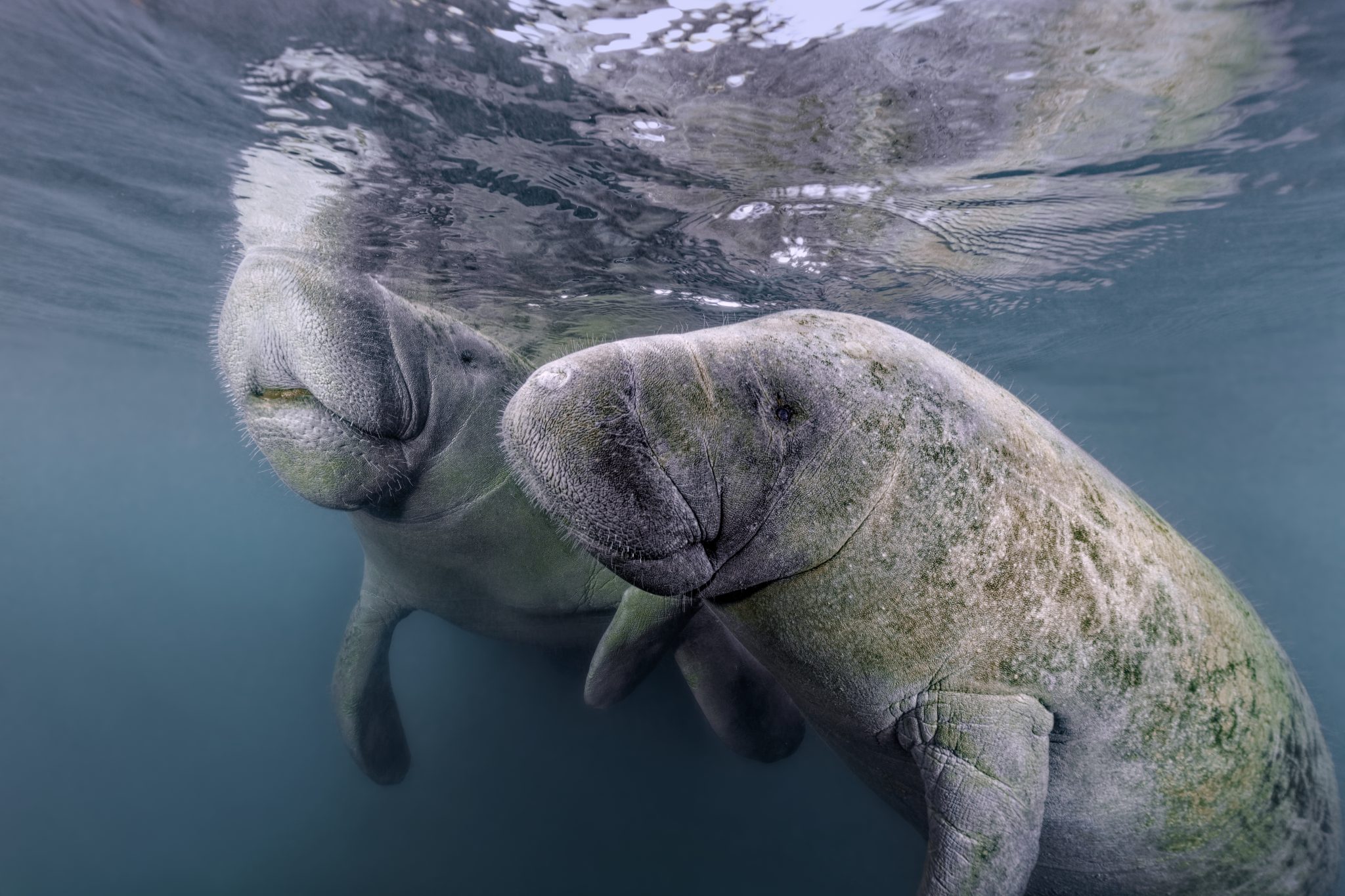
As National Safe Boating Week approaches, Save the Manatee® Club is urging boaters, and anyone that enjoys Florida’s waterways, to respect and protect the defenseless manatees that inhabit our shared waterways. From May 18 to 24, leading up to Memorial Day Weekend, the campaign aims to raise awareness about recreational boating safety and the importance of safeguarding imperiled manatees during the summer boating season. This week also emphasizes the importance of encouraging boaters to enroll in a boating safety course.
Manatees are semi-migratory marine mammals that are commonly found in shallow estuaries, bays, rivers, canals, and coastal areas throughout Florida and neighboring states. With some manatees venturing as far west as Texas and as far north as Massachusetts, collisions between these gentle giants and watercraft have become distressingly frequent. Boat propellers and high-speed collisions pose significant threats to manatees, often resulting in severe injuries or even death.
Save the Manatee Club is calling on all water enthusiasts to follow essential manatee safety tips to ensure the well-being of the imperiled manatee:
- Obey Speed Zone Signs: Familiarize yourself with and adhere to posted speed limits to prevent collisions with manatees.
- Reduce Glare with Polarized Sunglasses: Wear polarized sunglasses to enhance visibility and spot manatees below the water’s surface.
- Recognize Manatee Signs: Learn to identify signs of manatees in the area, such as swirls or flat spots on the water caused by their movements.
- Respect Manatee Sanctuaries: Keep a safe distance from posted manatee sanctuaries and avoid pursuing or harassing these marine mammals, as it is illegal and can disrupt their natural behaviors.
- Report Distressed Manatees: In Florida, promptly report distressed, injured, tagged, or orphaned manatees to the Florida Fish and Wildlife Conservation Commission (FWC) at 1-888-404-FWCC (3922). Outside of Florida, report sightings to the appropriate state agency or rescue organization. A list of agencies to contact is available at savethemanatee.org/report.
- Protect Seagrass Beds: Avoid boating over seagrass beds and shallow areas where manatees may be feeding. Stick to deep water channels while remaining vigilant, as manatees also utilize these channels during their travels.
- Dispose of Fishing Line Responsibly: Anglers should properly dispose of or recycle used fishing line to prevent entanglement hazards for manatees.
“Each year, National Safe Boating Week provides an excellent reminder for all of us to be aware that we share our waterways with vulnerable manatees,” emphasized Patrick Rose, Aquatic Biologist and Executive Director of Save the Manatee Club. “With the recent Unusual Mortality Event on Florida’s East Coast claiming an alarming number of manatees’ lives, it is more crucial than ever to prevent preventable deaths caused by watercraft collisions. By following manatee-safe boating guidelines, such as obeying speed zones and remaining vigilant for manatees, everyone on the water can contribute to the protection of these gentle giants.”
Save the Manatee Club offers a range of free materials to help safeguard manatees and raise awareness about manatee-safe boating practices. Shoreline property owners and park or marina managers can order aluminum dock signs to alert others about the presence of manatees in their areas. Boaters and paddlers can request packets containing a safety tips card, a waterproof boat banner, and a decal to display on their vessels, providing the number to report manatees in distress. To view and request these materials, visit savethemanatee.org/resources. Save the Manatee Club will also be hosting a live webinar for National Safe Boating Week on Tuesday, May 21st at 6pm EST. To register, visit savethemanatee.org/register.
Marine Life & Conservation Blogs
Book Review: Shells of the World

Shells of the World: A Natural History by M.G. Harasewych
Shells of the world is a guide to the world of marine, shelled molluscs. And what a varied and interesting world it is. Some of my favourite things to find on a dive are detailed in this book, including disco clams (or Electric File Clams as they are correctly names), the cephalopods, giant clams and sea hares. There are also many on my wish list, top of which is the Nautilus.
Each chapter provides a detailed description of the species, along with beautiful images. You can dive deeper and discover where they live, both with global distribution and the habitat they prefer. Learn about their diet, reproduction and diversity.
Having dipped in and out of this lovely book over the past few weeks, it has inspired me to learn more about this group of animals that we see on most divers, wherever we are in the world. Some of the shells are incredibly intricate and beautiful. I have always agreed with never collecting, or touching, marine life. The description of a certain set of cone shells should be a warning to those that are happy to pick up marine life! One of the cone shells has a local name called the cigarette snail. Why? Because once the venom is in your system from this animal, you only have time to smoke one cigarette before the affects of the venom are fatal!
What the publisher says:
Mollusks are invertebrate animals with a remarkable natural history and a rich fossil record, and their shells are prized for their breathtaking variety and exquisite beauty. Shells of the World provides a wide-ranging look at the incredible diversity of marine mollusks. An informative introduction outlines the lineages covered, followed by a directory section, split into classes, that profiles a broad selection of different taxa to give a sense of their sheer numbers and variety.
- Features hundreds of beautiful color photos, depicting both the live animals and their shells
- Discusses mollusk evolution, anatomy, life cycles, behavior, and ecology
- Describes unique characteristics, distribution, habitat, and size
- Provides valuable insights into the conservation of the world’s marine mollusks
- Ideal for malacologists and shell collectors everywhere
About the Author:
M. G. Harasewych is research zoologist emeritus and former curator in the Department of Invertebrate Zoology at the Smithsonian Institution’s National Museum of Natural History. A fellow of the American Association for the Advancement of Science, he is the author (with Fabio Moretzsohn) of The Book of Shells: A Life-Size Guide to Identifying and Classifying Six Hundred Seashells.
Book Details
Publisher: Princeton University Press
Hardcover
Price: £25
ISBN: 9780691248271
Published: 9th April, 2024
-

 Marine Life & Conservation Blogs3 months ago
Marine Life & Conservation Blogs3 months agoCreature Feature: Swell Sharks
-

 Gear Reviews4 weeks ago
Gear Reviews4 weeks agoGEAR REVIEW – Revolutionising Diving Comfort: The Sharkskin T2 Chillproof Suit
-

 Blogs2 months ago
Blogs2 months agoMurex Resorts: Passport to Paradise!
-

 Blogs3 months ago
Blogs3 months agoDiver Discovering Whale Skeletons Beneath Ice Judged World’s Best Underwater Photograph
-

 News3 months ago
News3 months agoPADI Teams Up with Wellness Brand Neuro to Drive Ocean Change and Create a Blue State of Mind
-

 Gear Reviews3 months ago
Gear Reviews3 months agoGear Review: Oceanic+ Dive Housing for iPhone
-

 Marine Life & Conservation2 months ago
Marine Life & Conservation2 months agoSave the Manatee Club launches brand new webcams at Silver Springs State Park, Florida
-

 Blogs2 months ago
Blogs2 months agoSeagrass Awareness Month brings critical food source for Manatees to centre stage


